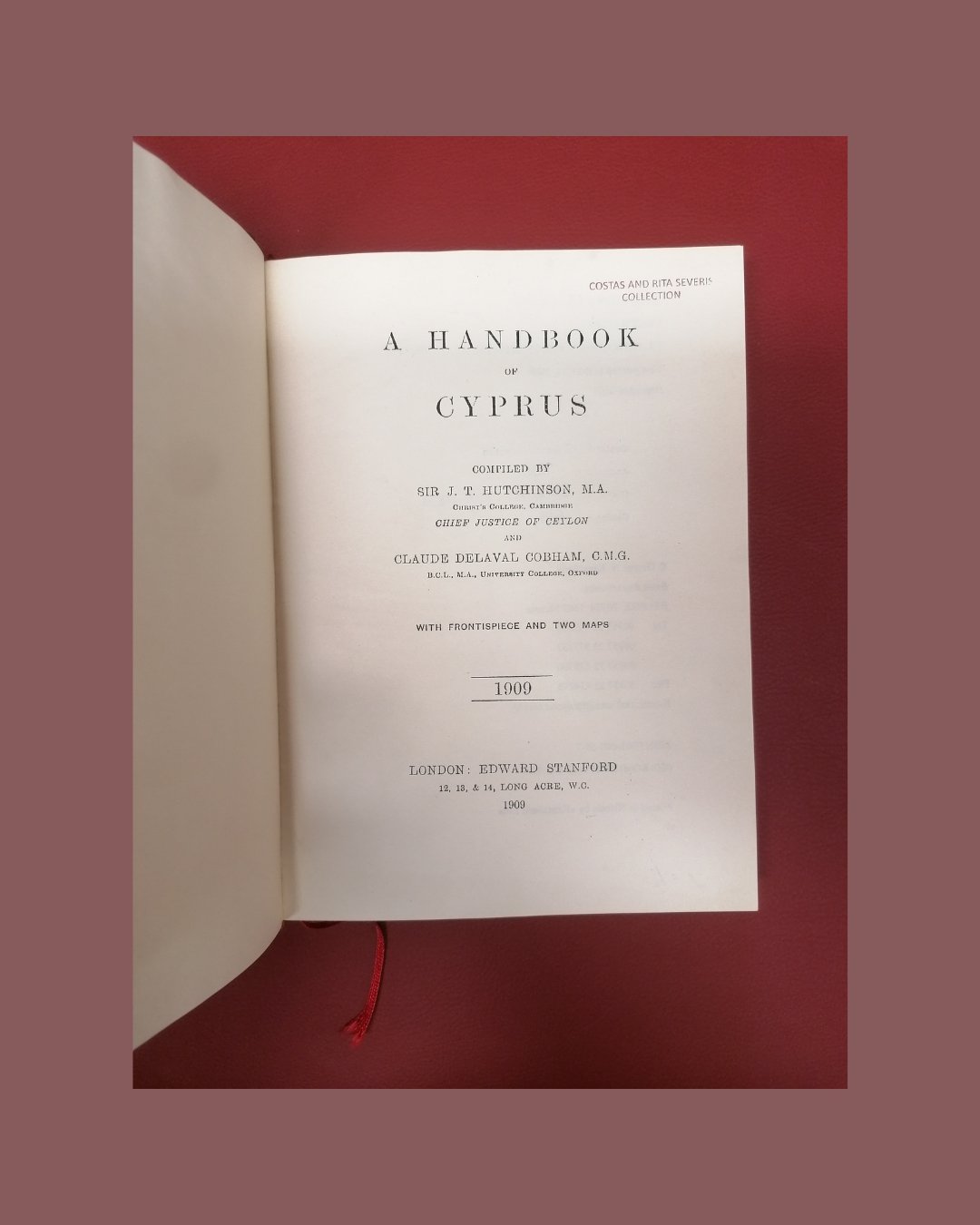A handbook of Cyprus, compiled by J. T. Hutchinson and Claude Delaval Cobham, London, Edward Stanford, 1909, reprinted 2001.
Love hath an island,
And I would be there;
Love hath an island,
And nurtureth there
For men the Delights
The beguilers of care,
Cyprus, Love's island;
And I would be there.
Claude Delaval Cobham (1842–1915) was a devoted scholar of Cypriot history and culture who served for many years as District Commissioner of Larnaca. He is best known for Excerpta Cypria, a landmark collection of travellers’ accounts, as well as for translations, essays and bibliographies that meticulously documented the island’s past.
Sir Joseph Turner Hutchinson (1850–1924), the co-compiler, was Chief Justice of Cyprus before later serving in Ceylon (modern-day Sri Lanka). His legal and administrative background gave the Handbook its precise structure and factual rigor. Together, Cobham’s historical curiosity and Hutchinson’s methodical approach produced a work that captured the essence of Cyprus in a single volume, both informative and reflective of the early twentieth-century British perspective.
At first glance, the Handbook reads as a practical manual, an administrative and geographical survey of the island. “34° 33′ and 35° 41' north and longitudes 32° 17′ and 34° 35' east. The port of Larnaca on the south coast is 2621 miles from Port Said and 1,117 miles from Valetta in Malta.”
Within its pages, one finds entries on agriculture, commerce, irrigation, forests, fisheries, government and finance. “The principal economic products of the land are barley, wheat, oats, vetches, caroubs, grapes, raisins, wine, silk, olives, cotton, sesame, aniseed, linseed, hemp, black cumin (mavrokokkos), beans, lentils, fruit, and vege-tables.” “The sponge fisheries in the territorial waters of Cyprus have been, since the British Occupation, of little use to the Cypriote, as they have been principally worked by fishermen from the Sporades. […] The fisheries are now supervised by a Government Inspector of Fisheries, who works the monopoly by sub-letting the rights to fish, the Government receiving in payment a proportion of the sponges taken. The owners of the harpoon boats pay 20 per cent. in kind and a licence fee of 10s. for their boats, while the owners of the machine boats pay 25 per cent. in kind and a licence fee of 20s. for their boats.”
In many ways, it is the British Empire’s attempt to catalogue an island newly added to its sphere of influence. Each chapter reflects the priorities of its time: order, progress, and development, concepts filtered through a distinctly colonial lens. “[…] Set between Athens and Jerusalem, Cairo and Constantinople, Cyprus seems to have been destined by nature to be the battle-field of the Near East and the prey of contending faiths and rival empires.”
Cobham’s work reflected both his administrative duties and his passion for Cypriot antiquities and history, ensuring that the Handbook preserved insights beyond mere bureaucratic records. “3. Mythology. Cyprus was rich in poetic myths and heroic legends. […] Its bards-would sing of Cinyras, son of Apollo, the kingly priest and sweet singer of the Paphian temple of his daughter Myrrha, changed to a myrtle, from whose bark sprang' rose-check'd'Adonis how Aphrodite loved the beautiful lad, how she mourned his untimely death, and from his blood called forth the anemone; of Aphrodite herself, foam-born goddess, with her hundred altars, and Pygmalion, whose kiss gave life to the ivory he was carving.”
Several editions of the Handbook appeared between 1901 and 1907, each updated with new statistics and administrative notes, culminating in the final revised edition of 1919, which bears witness to the many changes that occurred on the island since the book was first written.
A Handbook of Cyprus reveals an island of contrasts, fertile fields, bustling harbours and myths that linger alongside daily life. More than a collection of statistics, it brings Cyprus to life, tracing the rhythms of labour, the pulse of its communities, and the stories woven through its landscapes. For modern readers, the book is both guide and storyteller, offering a window into the island’s past where nature, work and legend converge.
You can find this book, and many more, in the Research Centre of the CVAR.
The 'Book Of The Month' series is made possible with the support of The Hellenic Initiative Canada.







